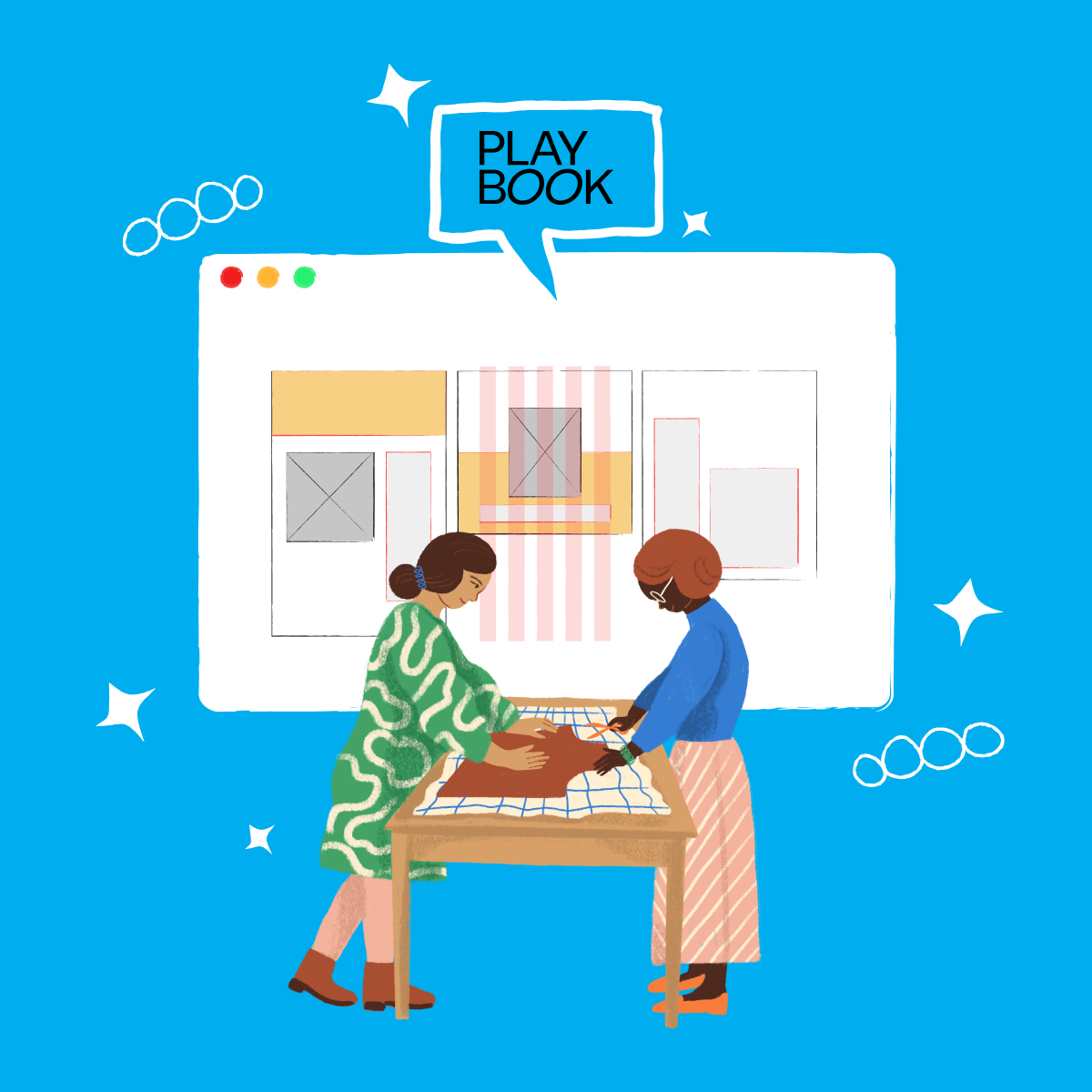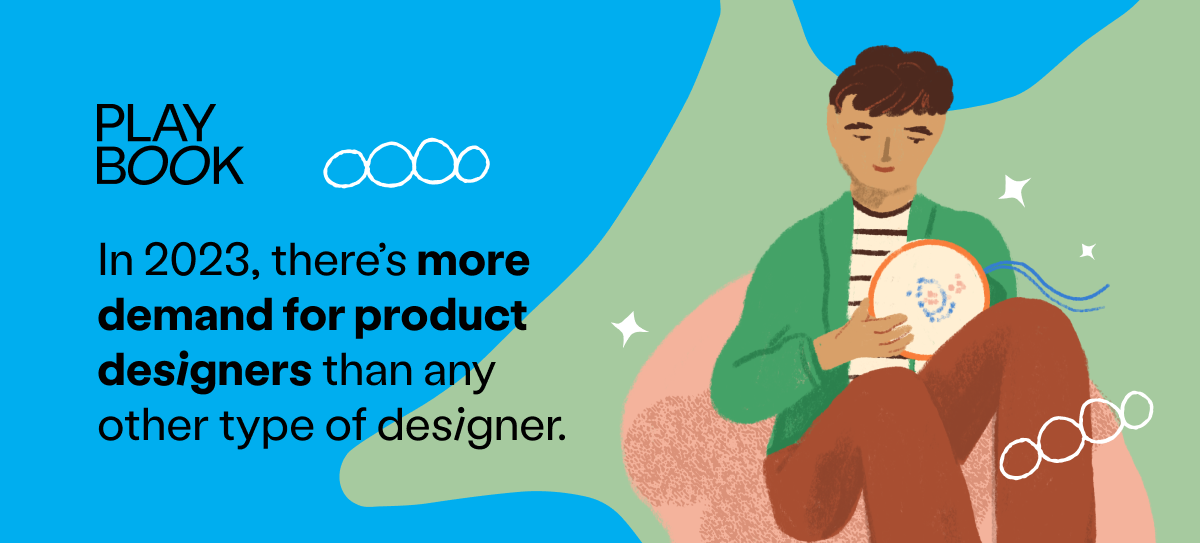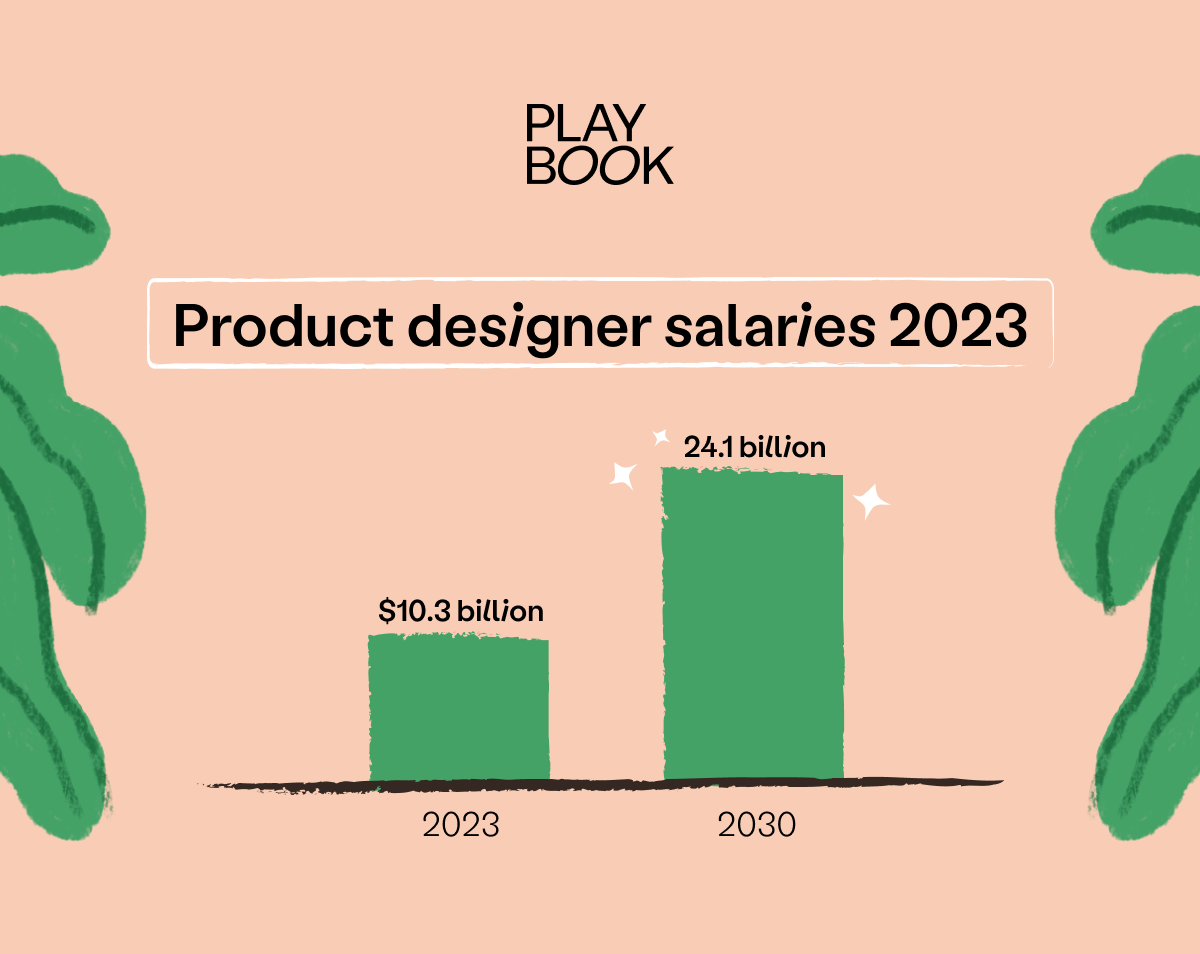
A product designer’s job is to oversee the creation of a new product from start to finish. This could be a physical product, like a kitchen utensil, or a digital product, such as an app.

Product designers are problem-solvers who manage the design process behind creating a new product or improving an existing product. In 2023, there’s more demand for product designers than any other type of designer, and the product design industry is projected to grow from $10.3 billion in 2023 to 24.1 billion by 2030 — so there’ll be plenty of opportunities for aspiring product designers in the coming years.

To land your next (or first!) product design job, you’ll need to prepare for the interview process. We’ve rounded up some of the most common interview questions you can expect to be asked at a product designer job interview to help you prepare.
Questions about you
1. Tell me about your design background.
This introductory question aims to find out more about your background, what you did before becoming a designer, and why you chose to go into product design.
Don’t worry if you don’t have a ton of experience — it’s an opportunity to share your strengths, skills, interests, and what you hope to continue developing throughout your design career.
2. What inspired you to become a product designer?
It’s okay if you’re just starting out or have recently switched careers — what they really want to know is what your motivations are.
For instance, some people want to get into product design for the money, not because they actually care about the field, so the interviewer is looking for a genuine interest in and passion for product design.
According to John Xie, Co-Founder and CEO at Taskade, it’s important to ensure “that your passion for the art and job really comes out, so make sure to prepare something special to impress them.
3. Why do you want to work here?
To answer this question, it’s essential to dive deep into the company’s mission and values and avoid giving a generic answer like “I admire the work you do.” By doing your research, you’ll be able to explain how your design principles align with the company's culture and goals.
Debbie Chew, Global SEO Manager at Dialpad, explains how she did this. “During one of my interviews, I expressed my genuine passion for user-centered design and innovation, which I noticed was a core value of the company I was applying to.
I explained how I believed in creating products that genuinely enhance users’ lives and how I admired their commitment to pushing boundaries in their industry.
This connection not only showed my enthusiasm for their work but also demonstrated that I had done my homework and genuinely wanted to contribute to their mission.”
Questions about your experience and skills
1. Walk me through your design portfolio
According to Will Yang, Head of Growth & Customer Success at Instrumentl, the most important thing in a product design interview is being able to talk about your work, using stories to explain what you did and why it matters.
“There are so many different ways that product design can be applied in different industries, which means there’s no one-size-fits-all answer when it comes to what makes a good product designer, he says.
Debbie agrees: “In my own portfolio, I didn't just present a finished mobile app interface; I included a section where I detailed how I conducted user research, identified pain points, and iterated on the design based on user feedback.
I explained the design principles I adhered to and the specific user goals each design element aimed to address. This narrative approach not only showcases your design skills but also demonstrates your problem-solving abilities and how you collaborate with others.”
Debbie adds: “By presenting your work as a story of growth and learning, you not only stand out from other candidates but also give interviewers valuable insights into your design process and mindset, which can be a significant advantage in landing that product design job.”
2. What design projects are you most proud of and why?
With this question, the hiring manager wants to understand your strengths, interests, and how your skills might complement the rest of the team.
“When it comes to junior-level design positions, you’re likely to be judged mostly on your skills and not on your experience. That’s why you should focus on the way you present your work. Show your best, most impressive projects, and leave the rest out,” advises Matthew Ramirez, founder of Rephrasely.
3. How do you stay updated with the latest design trends and tools?
Design is a fast-moving field, and it’s essential to stay on top of the latest trends and tools to stay at the leading edge of the industry. Your ability to answer this question will demonstrate your intrinsic motivation in the field of design.
This question might also be phrased as: “How do you approach continuous learning in the field of product design?”
4. Which designers or brands have influenced your design philosophy?
This question will help the interviewer get a feel for your tastes and influences, which inform your design style. It will also help them understand whether your design philosophy aligns with theirs.
5. What tools and software are you most comfortable working with?
With this question, the interviewer wants to get a better understanding of your technical skill set and which design tools you’re used to working with.
Questions about how you work
1. Describe a challenging situation you faced in a past design project and how you overcame it.
This question gives you an opportunity to demonstrate your problem-solving skills and ability to overcome challenges and stressful situations at work.
2. How do you handle feedback and criticism on your designs?
Knowing how to handle constructive criticism is crucial to being a successful designer. It’s important to demonstrate your ability to accept feedback — without taking it personally — and incorporate it into new iterations of your designs.
3. How do you prioritize tasks when working on multiple projects simultaneously?
Time management is a core skill for designers, who often juggle multiple projects at once. Your ability to prioritize tasks effectively is, therefore, critical to your potential employer.
4. Describe a time when you had to collaborate with a cross-functional team.
To answer this question, you should be able to explain what a cross-functional team is and give examples of having worked with team members across different departments.
If you haven’t had experience working in cross-functional teams, try to provide another relevant example from your school or previous work experience.
5. Describe a time when you had to make a design decision that went against popular opinion.
It’s not easy to stand up for your design choices when the majority is against them. However, if you have a solid process, you’ll be able to defend them.
If you haven’t had experience in this situation, try to think of another relevant example, such as a group coursework project.
Another way this question might be phrased is: “How do you handle disagreements with stakeholders regarding design choices?”
Questions about product design
1. How do you define good product design?
Product design is all about solving a problem for the end user, so your answer should explain in your own words what makes the product design process successful.
2. How do you approach user research and its importance in the design process?
User research is fundamental to product design, so you’ll need to demonstrate your understanding of both the importance of and main approaches to user research.
According to José Moya, Outreach Manager at Capicua Full Stack Creative Hub, you should look for ways to “Highlight your ability to empathize with users and conduct effective user research to inform design decisions and discuss how you incorporate user feedback into your designs.”
3. Explain the difference between UI and UX.
UI (user interface) and UX (user experience) design are intrinsically linked to product design, so demonstrating your understanding of them is key to winning over your interviewers.
4. How do you handle design iterations based on user feedback?
Iterating designs is also essential for optimizing the end user’s experience. To be successful, product designers need to have a clear system for prioritizing and integrating feedback into iterations.
5. How do you ensure accessibility in your designs?
Accessibility requires considering a number of factors in your design, including font size and color, alternative text for images, and using clear and simple language.
Although there is no one way to ensure accessibility, use your answer to demonstrate your knowledge of these principles.
6. Explain your process for wireframing and prototyping.
In digital product design, wireframes are low-fidelity versions of the final product that take less time to create, while prototypes are more in-depth models that require more time.
Your answer should show that you know the difference between them and how to use them at different stages of the design process.
7. How do you test the usability of your designs?
Usability and A/B testing are the two main types of testing used in product design. Use your answer to demonstrate your understanding of each and how you would use them — usability testing provides qualitative data, while A/B testing explains the quantitative data.
Questions about your behavior
1. How do you handle stress or tight deadlines?
Designers often work under pressure and have tight deadlines, so the recruiter will want to know that you can handle working under stress. Use examples from your school or previous work experiences to illustrate how you cope under pressure.
2. Describe a time when you had to compromise on a design due to limitations.
Design projects are often subject to resource constraints, such as budget limitations, time constrictions, or understaffing.
Therefore, it’s important to show that you know how and when to make compromises on the design to stay within these restrictions.
3. How do you handle situations when you’re stuck creatively?
Every designer runs into creative blocks sometimes — what matters is how you get out of them. Your answer should explain the processes you use to generate and maintain a steady flow of new design ideas.
4. What values are most important to you as a designer?
This question is about your cultural fit with the company. To answer it, research the company’s values and (truthfully) align your answer to them.
When answering this question, Debbie advises providing specific examples of your values in action rather than vague statements that lack substance.
“By providing specific examples, you not only demonstrate that you have a strong moral compass and professional standards but also show your ability to apply these principles effectively in real-world design scenarios, which can be a valuable asset in securing a product design role,” she says.
5. How do you handle conflicts within a team setting?
Conflicts can arise in any team, so effective conflict resolution is a crucial skill. If you don’t have an example to share from your professional life, you can also describe how you resolved a conflict in another setting.
6. How do you approach giving feedback to fellow designers?
Giving effective design feedback is crucial. Explain to the interviewer how you provide peers with feedback that’s practical, actionable, and easy to understand.
7. Describe a time when you took a risk in your design and what was the outcome?
Sometimes, in design, you need to take risks. The key to success is knowing when those risks are worth taking — and when they’re not.
Questions about career development
1. What are your career aspirations in the next 5 years?
When a company hires a designer, they want to ensure their career goals align with their business goals.
The answer to this question can help them gauge that alignment, so it’s important to research the company before the interview to understand its mission and vision and prepare your answer accordingly.
This question might also be phrased as: “How do you see yourself contributing to our company’s design goals?” or “What kind of projects excite you the most?”
2. How do you see your role evolving in a growing company?
This is another question about your career goals and their alignment with business objectives. However, the recruiter also wants to know what ideas you could bring to the company and how your interests and strengths can help them achieve those goals.
3. What are your expectations in terms of professional development opportunities?
To answer this question, think about your aspirations as a designer and the kind of skills you’ll need to achieve them. Try to align these goals as closely as possible with the company’s objectives.
Your next product design job is just one interview away
Preparing answers to these 28 product design interview questions will take you a long way toward landing your next product design role.
But if you’re still on the fence about whether product design or UX design is a better fit, take a look at this article about whether UX design is a good career choice for you.
